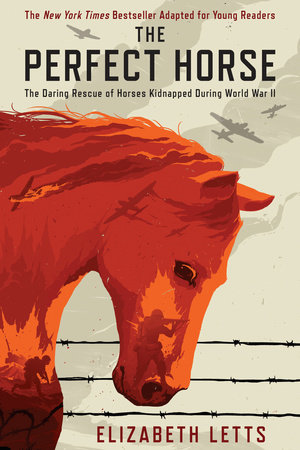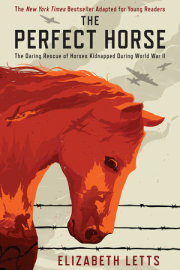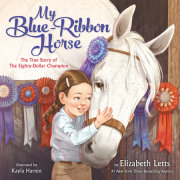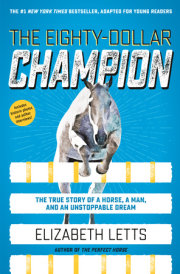Eight Years Earlier
1.
An Unlikely Olympian
Berlin, Germany, 1936
Alois Podhajsky wore the cares of the world on his narrow, melancholy face. His gaze was like a poet’s, directed inward. His oeuvre was the art of classical dressage. His verses danced on four legs. Podhajsky looked as if he’d been born to sit astride a horse. His long straight torso had no awkward angles, no rounded curves, nothing to detract from its elegant lines. But to look at the Austrian officer’s forlorn expression was to understand that within, he carried a shadow. In 1918, after being severely wounded in the neck while serving in the trenches in Flanders, he had suffered from shell shock. His love for horses had brought him slowly back, but the deep stillness of a defeated warrior never left him.
On June 12, 1936, Alois Podhajsky sat astride his mount, Nero, ready to enter the rectangular dressage arena that had been set out with meticulous precision on May Field, a twenty-eight-acre lawn just to the east of the Olympic stadium; it was the site of the Olympic competition in equestrian dressage. The fact that this pair was competing here, in the eleventh Olympic Games, against the top equestrian contenders from around the world, was unlikely indeed. Nero, a gangly brown Thoroughbred, had been bred to race, but having proven slow, he had been cast off for use as an army cavalry mount. The gelding had shown equally little talent as a soldier’s charger, and the army had nearly sold him off before Podhajsky decided that the horse showed potential and saved him from the auction block. Podhajsky too was an almost-reject, kicked out of Austria’s prestigious cavalry officer training school after a back injury made him unable to bend at the waist, forcing him to abandon his first love—jumping. Unwilling to give up his passion, he kept riding even though he had to be lifted onto his horse. He would never forget the day in 1928, during a cavalry school lesson, when his riding instructor scrutinized Podhajsky’s stiff form in the saddle and said, “You’re finished.” But Podhajsky had pressed on, working with his reject mount, dedicating his energy to the art of dressage. Just three years later, Podhajsky had received the Austrian cavalry’s highest honor: In 1931, he was sent to study for two years at the world’s oldest academy of classical riding, the Spanish Riding School. The instruction he received in the classical art of horsemanship was as much a spiritual education as a physical one. Students neither entered their horses in competitions nor vied for any medals. They pursued perfection as an end unto itself. Podhajsky’s love for horses, for riding, for life, had been restored. Five years after being expelled from the cavalry school, Podhajsky was representing his country at the Olympics. While Nero was neither flashy nor handsome, the gelding was willing and cooperative, and after several years of training, they had risen to the top of the sport: Today, they entered the arena as favorites.
Although Podhajsky believed that the Austrian tradition of riding was without peer, he knew that many found his country’s traditions backward-looking. One of Podhajsky’s teammates was the oldest competitor at the entire Games, born way back in 1864. Podhajsky’s own love of Austria’s equestrian traditions had started during his boyhood, and at eighteen, he’d joined the cavalry. Posing for a portrait in 1916, wearing the uniform of his regiment, he looked younger than his eighteen years. His ornate uniform—fur-muffed, spike-helmeted, brass-buttoned—could be mistaken for a costume. In his right hand, he held white gloves; at his left hip, a sword and scabbard. He resembled a boy playing dress-up in his father’s clothes. But Austria lost both the Great War and its empire, and the pomp and traditions to which he had sworn boyhood allegiance were mostly gone. What remained of the great Austrian empire was its tradition of horsemanship, which Podhajsky still believed was the best in the world. Now was his chance to prove it with the eyes of the world upon him.
Nero’s turnout was impeccable, each of his braids carefully wrapped in snow-white adhesive tape, setting off the arched carriage of his neck. Podhajsky looked resplendent in the olive uniform of the Austrian Republic. The failed racehorse and his reject rider were preparing to compete in one of the most complex and demanding sports. Of all equestrian sports, dressage requires the most discipline. Descended from intricate military maneuvers developed in ancient times, dressage asks horse and rider to execute a series of carefully prescribed movements. Just as ballroom dancing and pair skating command partners to work together seamlessly, in the sport of dressage, the rider performs an intricate pas de deux with his partner—a twelve-hundred-pound four-footed beast. Great dressage demands more than skill; it engages a rider’s inner wisdom and his ability to communicate with a mount in the silent language of horsemanship.
The arena was laid out with geometrical precision on the clipped lawn of May Field. Large pots of flowers were set up at intervals around the perimeter, adding vibrant splashes of color. In the distance, the impressive hulk of Olympia Stadium filled the horizon, festooned with the flags of many nations. Evenly spaced scarlet Nazi swastika banners stained its perimeter. Inside, a hundred thousand seats were filled to capacity for the track and field events. The crowd assembled to watch the dressage competition, though a quarter that size, was no less fervent. Men in white fedoras and women in colorful summer dresses speckled the field’s stands like rainbow sprinkles on ice cream. Podhajsky had committed to memory the complex series of movements that he would need to execute perfectly in the seventeen minutes allotted to him. If his horse stepped out of the low barriers that marked the boundaries of the twenty-by-sixty-meter ring, he would be eliminated. Surrounding the arena were points marked by letters of the alphabet: If the program specified that a movement be completed as he passed that mark, the horse needed to begin or end the movement just as the rider’s boot passed the marker.
In the sport of dressage, the rider spends years teaching a horse to perform movements on command that come naturally to horses in the wild. The horse has four ordinary paces: walk, trot, canter, and gallop, each with a different cadence. But in each of these paces, a wild horse will perform the gaits with a variety of nuances. For example, when a horse trots, it moves its legs in diagonal pairs with a two-beat cadence. A wild stallion, showing off, sometimes elevates the simple trot to an art form—he coils his powerful haunches underneath him, slows down the tempo, and elevates each step, transforming the workaday gait into a balletic art. These exaggerated movements are innate in certain circumstances, but to coax a horse to perform them on command takes the utmost tact, sympathy, and meticulous training from a rider. In an advanced dressage test, a rider may ask a horse to perform a pirouette, whereby the horse’s hindquarters remain almost in place while his forelegs canter a full circle around them, or a half-pass, where a horse moves both forward and sideways, his body slightly bent around his rider’s leg, his legs crossing each other. Each of these movements has been inculcated slowly, painstakingly, in a step-by-step process that takes years to complete.
As he awaited his turn, Podhajsky hoped that his own long years of practice would pay off. His thoughts turned inward as he listened to the voice of his instructor at the Spanish Riding School, the man who had taught him to tap into riding’s most ancient traditions. Every competitor on May Field had trained hard to be here. Everyone hoped to win an Olympic medal. But Podhajsky had more at stake than the desire to win a prize: He believed that the deep communion between rider and horse was something exalted. In an indifferent and sometimes cruel world, he wanted to embody what his years of patient training stood for—discipline, tradition, perfection for its own sake, passion given form. Winning a medal might be the final outcome of this endeavor, but for Podhajsky, the endeavor itself mattered most.
Podhajsky lifted his eyes to look over risers jammed with spectators. So strange that such a large crowd was gathered here to watch a spectacle that in some ways was so private. As Podhajsky himself later commented, “Excited applause does not help in the least; what is needed is perfect sympathy and harmony with one’s partner.” Practicing this most delicate art, Podhajsky had learned to turn himself into an animal psychologist; he knew that success belonged to those riders who were able to ally themselves with their mounts. Today Podhajsky would ride for Austria, but more than anything, he would seek to enter into an almost mystical state of union with his horse.
As Podhajsky waited his turn to enter the arena, he watched the other competitors with a practiced eye. He knew that his stiffest competition came from the Germans, who had a home field advantage. He was certain that he and Nero could compete with the world’s best, though as he looked across the field at the international panel of judges assembled there, he knew that this was not just a competition but also an elaborate game of political chess.
One hundred and thirty-three riders from twenty-one countries had gathered to compete in the equestrian events at the summer ’36 Games. Three years earlier, the National Socialist Party had catapulted Hitler into power. Designed to showcase the Nazi Party’s Aryan ideals, the Berlin Olympics were a piece of nationalistic theater dressed up as a sporting event. The Nazis, in a clever propaganda move, had camouflaged many of the blatant anti-Jewish policies that were already being enforced, removing anti-Semitic street signs in Berlin and even toning down the rhetoric in the newspapers, but a latent menace and violence lurked just beneath the whitewashed surface.
On this very public stage, the equestrian events had a particular significance: The competitions were open only to members of the military. Uniformed officers rode their best horses in contests specifically designed to test the mettle of equestrian soldiers. The three different sports—dressage, Three-Day Eventing (also called “the Military”), and Prix des Nations (stadium jumping)—could easily be viewed as a stage for international battle writ small. To mark this importance, the Prix des Nations, or Nations Cup, had been given the prime spot: just before the closing ceremonies, when the eyes of the world would be watching. For centuries, men had measured their military might by the worth of their horses. In 1936 Berlin, the equestrian competitions were psychological war games: a dress rehearsal for the much larger cataclysm that lay just over the horizon.
At one end of the judges’ dais, his face in a concentrated scowl, sat the most influential person at the equestrian site, Gustav Rau. Clad in a dark suit, his bald head covered by a felt fedora, Rau lacked the long limbs and regal bearing of a horseman, but what he lacked in panache, he more than made up for in acumen. This fifty-six-year-old German was the mastermind behind every one of the equestrian competitions at the Olympics. Gustav Rau had overseen each detail of the equestrian events: from the selection of the judges to the layout of the courses, a preparation that had consumed the previous two years. In spite of being a civilian, he relied on the close cooperation of high-ranking Nazi officials, in particular Hermann Fegelein, head of the SS Cavalry. Fegelein was the special protégé of Heinrich Himmler, Reich leader of the SS.
Gustav Rau watched from the dais as the next competitor prepared to enter the ring. He recognized Podhajsky and Nero as the winners of several important competitions leading up to the Olympics, beating out top German entries. Today’s test called for Podhajsky and Nero to enter the ring at an extended canter and then stop on a dime precisely in the center of the arena.
Even though Podhajsky wore white gloves, his movements were barely perceptible as he shortened his reins, a signal to Nero that they were soon to begin. The press had called the ex-racehorse “a long-legged gelding without charm or personality,” and indeed, Nero once was flighty and nervous, afraid of his own shadow. Just as they prepared to enter the arena, the words of the oldest groom from the Spanish Riding School came into Podhajsky’s head: “Don’t be nervous. The horse is all right.” He relaxed his thighs and sank deeper into his saddle; he turned inward, listening to his mount. An old adage says that a good rider can hear his horse speak and a great rider can hear his horse whisper. As Podhajsky listened to Nero’s whisper, the whole world fell away, the flags, the crowds, even his own will to win. All that was left was himself, his horse, and the signal that passed between them, like a radio tuned to a frequency that only the two of them could hear. He was scarcely aware of the five judges lined up at the far end of the arena, one each from France, Germany, Sweden, Austria, and Great Britain. He took no notice of the German observer, Rau.
When the ringmaster gave the signal, Podhajsky and Nero entered on a straight line at a controlled gallop, stopping smoothly so that Podhajsky’s riding boot was centered at the exact midpoint of the arena, on the spot that, though unmarked, was known as X. Nero stood as still as a bronze statue while Podhajsky swept off his visored military cap to salute the judges. Then the pair continued at a free walk, a deceptively simple movement that tested a horse’s perfect obedience. Podhajsky sensed Nero relaxing, elongating his neck as he felt the reins slacken just a bit. The horse seemed to take no notice of the fluttering flags, the crowds of people, or the roaring from the track-and-field events in the distance. With no obvious cue from his rider, Nero picked up a floating trot and proceeded to crisscross and zigzag through the arena, flawlessly executing each of the complicated prescribed movements as the twenty-thousand-plus members of the crowd leaned forward in their seats in a collective spellbound hush. Nero, unprepossessing when standing still, now looked bright and lively, while his rider remained so motionless that he almost seemed to disappear.
For more than a year after Podhajsky returned from the front in 1918, the injury to his neck prevented him from speaking above a whisper; he was mired in depression about the loss of the great empire that he had sworn his young life to serve. Only rekindling his love of horses had slowly pulled him out of his pit of despair. Now, as he neared the end of his ride, turning back down the centerline of the arena and halting once more at the X while doffing his hat in salute, the world seemed to glow in vivid hues. His ride had gone flawlessly, and as he dismounted, well-wishers crowded around him, assuring him that he was certain to take home the gold medal. But Podhajsky had no time to listen. He stripped off one white glove and reached into the hidden pocket sewn into the interior of his jacket. He extracted a sugar lump from his pocket, and the adoring crowd watched quietly while Nero daintily nuzzled up the treat from the palm of his master’s outstretched hand. Podhajsky laid his other hand on his horse’s shoulder. The two had eyes only for each other.
Seated on the dais, the German judge was adding up his marks (each individual movement was scored separately, with some given more weight than others). When the German judge realized that the Austrian had the best score, he stealthily erased a few marks on his scorecard and penciled in a lower mark.
The following day, on June 13, 1936, Alois Podhajsky stood on the podium watching the red and white flag of his country shimmer against the Berlin sky. The pair had finished in third place, behind the two German riders. He was a representative of a young democracy, the Republic of Austria, and had demonstrated one of Austria’s greatest prides, its equestrian prowess, in front of the world. As he bowed his head to receive his medal, he instantly became one of his country’s most famous citizens. In the end, Germany gained all of the individual and team gold medals in all three equestrian events, a clean sweep never equaled before or since. Later, when Gustav Rau penned the official review of the Olympic equestrian events, he claimed that only German superiority, not any inherent unfairness, had led to the lopsided medal count, though in the annals of Olympic equestrian history, the 1936 results have remained controversial. Of Podhajsky’s ride, Rau wrote only, “His appearance had attracted notice.” Nevertheless, Podhajsky and Nero, two ugly ducklings, had won the world’s attention with their swanlike performance.
Podhajsky returned to Austria a national hero. The success of the German equestrian team had burnished Gustav Rau’s reputation to a high shine. Neither of these men knew that their paths would cross again. Each man would have a mission: Alois Podhajsky would soon be entrusted to safeguard one of his nation’s most important cultural treasures. Gustav Rau would be hell-bent on seizing those treasures for Nazi Germany.
Copyright © 2016 by Elizabeth Letts. All rights reserved. No part of this excerpt may be reproduced or reprinted without permission in writing from the publisher.






